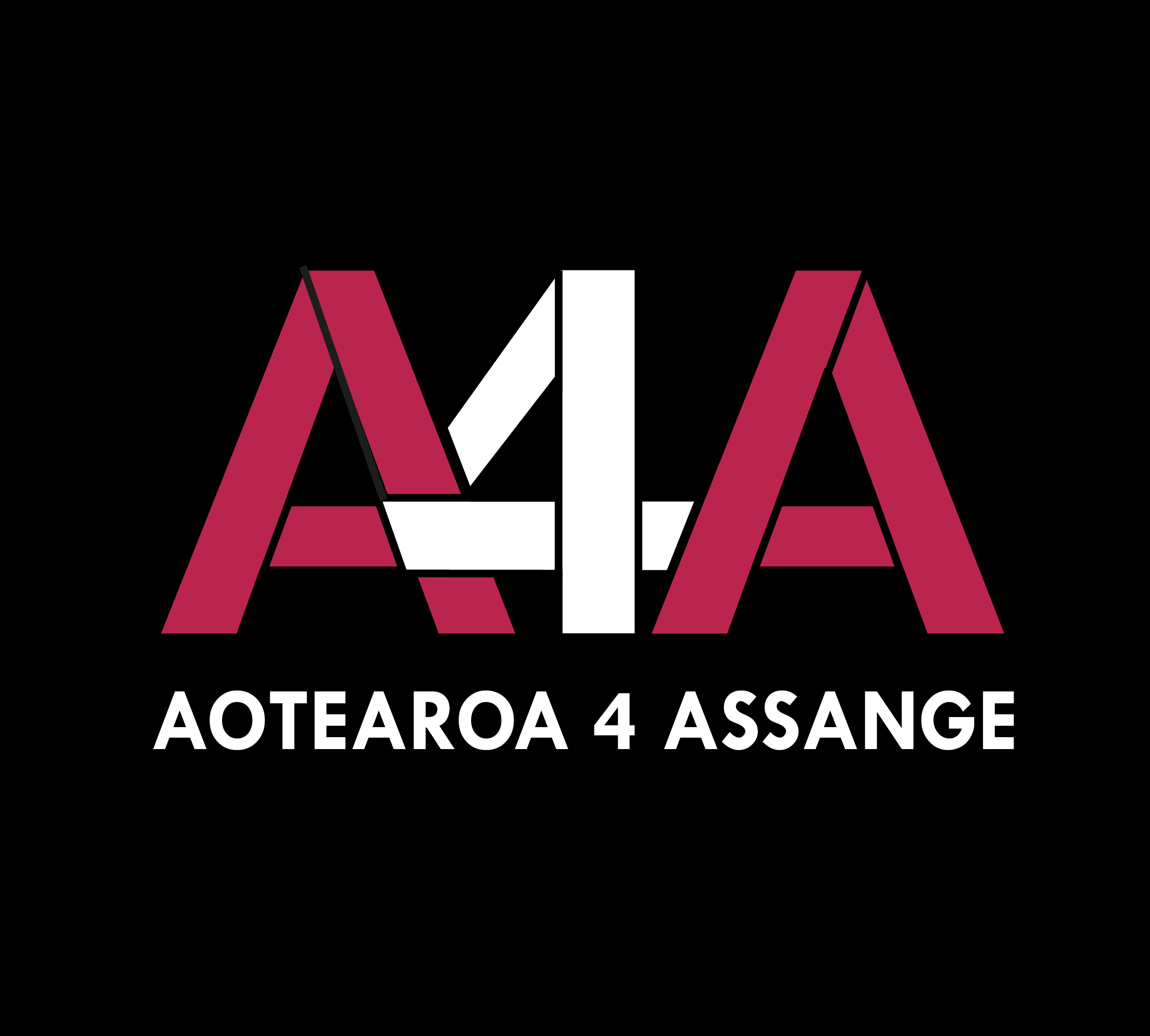Julian Assange Permitted to Marry in Belmarsh Prison

- : Aotearoa 4 Assange
- : 14/03/2022
Julian Assange Permitted to Marry in Belmarsh Prison
Wikileaks founder Julian Assange has been given permission to marry his fiancée Stella Morris in the maximum security Belmarsh prison in London on March 23rd. Stella is a member of his legal team and mother of his two young children. The couple had to fight for their right to marry, even bringing legal action against the UK Government.
Julian and Stella will be dressed by Vivienne Westwood. Julian will wear a kilt, honouring his Scottish ancestry. The couple are said to be very excited despite the severe restrictions imposed on the ceremony. They will be permitted only four guests and have been denied the request to marry in the prison’s Chapel, despite the fact that Julian regularly worships their.
Stella told the Daily Mail that the right to marry is ‘written into law’ in the UK. ‘Of course, the circumstances are not ideal but I am relieved that reason has prevailed and I hope there will be no further interference with our marriage. Julian is not charged with any crime in this country, he is not serving a sentence, his imprisonment serves no purpose at all other than to prolong and make his suffering worse. I hope the injustice of this situation is swiftly brought to an end so that we can enjoy marriage outside of the walls of Belmarsh when he is freed.’
Assange is being held in the notorious Belmarsh prison despite not being convicted of anything. He is awaiting the outcome of a US extradition request to face charges of ‘espionage’ for publishing evidence of war crimes and torture. Press freedom groups warn this unprecedented prosecution would criminalise fundamental journalistic practices.
Assange recently suffered a minor stroke, and doctors warn this will likely lead to a fatal stroke if his conditions are not improved quickly. He is detained in solitary confinement 23 hours per day, which fits the definition of torture under international law. The Australian Government has been criticised for ‘sitting on their hands’ over one of their citizens. The UN Special Rapporteur on Torture Nils Melzer said The Australian Government as ‘failed to support Julian Assange, and is complicit in his psychological torture.’
Helen Clark recently said ‘You do wonder when the hatchet can be buried with Assange? And not buried in his head by the way. But at some point, could people move on? I do think that the information that’s been disclosed by whistle-blowers down through the ages has been very important in broader publics getting to know what is really going on behind the scenes. And should people pay this kind of price for that? I don’t think so… The real issue really is the activities they were exposing, not their actions of exposure.’
Aoteroa 4 Assange is calling on the New Zealand Government to stand for Assange to protect human rights, the public’s right to know and peace.
- stella rainbow 2
- : https://twitter.com/i/status/1462562408749170689
- : Matt Ó Branáin
- : National Co-ordinator of Aotearoa 4 Assange
- : matt.o.branain@A4A.nz
- : 64204382863
- : http://a4a.nz
- https://www.facebook.com/groups/a4assange | https://twitter.com/A4Assange | https://www.instagram.com/aotearoa4assange/
Alimetry raises $16.3 Million to launch wearable diagnostic device for the gut

- : Alimetry Limited
- : 02/03/2022
Alimetry, a digital healthcare and medical device start-up, announced today it has closed a NZ$16.3 Million financing round led by New Zealand largest venture capital investor Movac. Existing investor partners IP Group, Matū Karihi, and UniServices supported the round, with K1W1 also participating.
The company will use the funding to accelerate the international launch of its first product, a wearable diagnostic device called Gastric Alimetry. Gastric Alimetry uses a stretchable high-resolution sensor to non-invasively map digestive patterns, and delivers clinical reports via the cloud to inform the diagnosis and classification of gastric disorders.
“Chronic gastric symptoms are extremely common, yet many of our patients still suffer from repeated inconclusive tests, trial and error care, and confusion,” said CEO Greg O’Grady, a Professor of Surgery and co-founder of Alimetry. “Gastric Alimetry is on track to deliver breakthrough results in diagnosing gastric symptoms, enabling enhanced clinical outcomes and safer, more accessible, and less-invasive care.”
Gastric Alimetry targets prevalent stomach diseases including nausea and vomiting, gastroparesis, and functional dyspepsia, affecting over 8% of the world’s population and costing billions of dollars in healthcare expenses. The device is currently undergoing clinical trials in 5 countries, with results and further regulatory approvals expected during 2022. Alimetry will also use the new funding to expand its artificial intelligence capabilities and expand its product pipeline.
Lovina McMurchy, a General Partner at Movac who will join Alimetry’s Board, stated: “While Alimetry has only recently come out of stealth mode in New Zealand, the team has made an incredible amount of progress in bringing their product to market globally. They are already working with the top gastroenterology clinics in the world to trial the devices and they are in the approval process with the Federal Drug Administration in the US for full scale commercialization. This is a tremendous example of what our science ecosystem can produce at it’s very best.”
Gastric Alimetry has recently received numerous innovation and product design awards, including Gold from the Australian Good Design Awards, and a prestigious ‘Purple Pin’ at the New Zealand Best Design Awards. The Best Awards judges stated: “This is a tangible example of how New Zealand science, technology and design can work together to produce brilliant results.”
Alimetry was spun-out of the University of Auckland in 2019 from a centre of excellence in digestive diseases. The company was founded by Prof. Greg O’Grady and Dr. Armen Gharibans, on the background of a decade of award-winning science.
To learn more about Alimetry visit www.alimetry.com.
About Movac
Movac is New Zealand’s largest and most experienced venture capital fund, supporting technology founders from early stage through to growth investing. Movac was the first institutional grade venture investor supported by both New Zealand Superannuation and Kiwi Wealth. It currently has $400m funds under management and invests across deep tech, software, hardware and healthtech.
About IP Group
IP Group is a leading intellectual property commercialisation company focused on evolving great ideas and cutting-edge research from its partner universities into world-changing businesses. The Group pioneers a unique approach to developing these ideas and the resulting businesses by providing access to business building expertise, capital, scientific insight, and supporting infrastructure. IP Group, which is listed on the London Stock Exchange (LSE: IPO), has a strong track record of success and, its portfolio comprises holdings in early stage to mature businesses across life sciences and technology. In Australia and New Zealand, IP Group works in close partnership with the Go8 Universities and the University of Auckland to identify ground-breaking technologies rooted in hard science, which have the most promising commercial potential. www.ipgroupanz.com
About University of Auckland Inventors’ Fund, managed by Auckland UniServices
The University of Auckland Inventors Fund is an evergreen, open-ended $20 million investment fund owned and managed by Auckland UniServices Limited, the commercial company for The University of Auckland. The Inventors’ Fund provides seed capital for ventures started out of the University of Auckland. www.uniservices.co.nz
About Matū Karihi Fund.
Matū is a venture capital fund investing in early-stage science and deep technology commercialisation from education and research institutions and the private sector. Karihi (nucleus) is Matū’s original pre-seed and seed-focused fund, working with start-ups at the earliest stages of their journey. As an open fund it raises capital over time and holds investments through to exit where possible, and therefore invests on a long timeframe. www.matu.co.nz
About K1W1
K1W1 Ltd is an investment company owned by Sir Stephen Tindall. It has invested over a total of $100M Seed and Venture capital into a large number of start-up and early stage businesses from Biotech, environmental technology, high tech, software and other high export potential businesses. The aim is, either directly or as a “fund of funds” to assist young entrepreneurs to grow New Zealand as a leader in the “knowledge economy” and to help create a culture of making New Zealand “cash flow positive” in international goods and services trade.
Attached files: Gastric Alimetry-11
- Alimetry_System_Light
- : https://youtu.be/Tw2sBEDQsPU
- : Hanie Yee
- : Chief Operating Officer
- : hanie@alimetry.com
- : 6421651226
- : https://alimetry.com
- @alimetry_ltd | https://nz.linkedin.com/company/alimetry-ltd
Newsletter: Press release vs blog post
NewzEngine.com – Anyone can write, but not everyone can write compelling, interesting content on a regular basis. So, when the commitment is made to the blank page, you want to get the most value out of your time (or the time of the person you may be paying to write your content). What is the best bang for your buck – a press release or a blog post?
The answer is simple. It can be both. You can start with the same idea, the same information, you just need to alter the style.
A blog post is conversational – it’s like chatting to a friend about your topic. A press release is a formal statement – it’s like a cover letter for a job application, you are out to capture and retain the attention of an audience who are unlikely to know you, who have many people competing for their attention, and for whom you want something very significant (in this case a professional writer or broadcaster to think your content is worthy of their time and effort).
This is a blog post, so the headline is informal. If it was a press release, the headline might be “Press releases and blog posts differ in style, not content”.
The first sentence would change too, for example: “Effective content writing takes into account stylistic differences.”
Of course, this isn’t a press release because it isn’t newsworthy. And that is another critical difference between these two content types. A blog post seeks to be informative, while a press release seeks to be newsworthy. The latter announces a new product, new survey, new appointment, new investment, new event, and so on.
If you are creating content for your business or organisation on a regular basis, then you will write many blogs, and only some of them will turn into press releases. And, when they do, you can send them out using NewzEngine.
Find out more about writing press releases check out ‘8 Steps to Writing an Effective Media Release’ here.
Newsletter: Media release etiquette

NewzEngine Newsletter: It would not be appropriate in an office to shout at the person next to you, and it would be ineffective to whisper when you’re on stage taking part in a panel discussion. When sending an email, ‘all caps’ are only to be used in extreme circumstances and using a smiley-faced emoji at the end of a sentence in which you’ve criticised the recipient is passive aggressive
The etiquette of office life is generally well understood, but what about when communicating with journalists via a media release, what’s the etiquette for that? Here are a couple of quick thoughts.
While there are no hard and fast rules, in generally it’s best to avoid jargon. Journalists are usually people who got into the profession because they love words, so try to avoid phrases that are overused and bit cringeworthy. The first time someone talked about “going forward” was probably OK, but it’s safe to presume this term has now been overused. Ditto “best in breed”, “window of opportunity”… anyway, you get the point.
The second is to think about the journalist’s audience. It’s kind of insulting if you don’t. You want them to take an interest in what’s happening in your world, so you should probably think a little bit about theirs.
At NewzEngine we have split our media distribution lists into sections for this very reason. There as 11 regional locations as well as ‘National news’ and 12 sectors to choose from, as well as Māori media. Users can tick more than one box. For example, if your media release is about a tech event in Palmerston North taking place on a marae, it would be entirely appropriate to tick ‘Manawatu’, ‘Technology’ and ‘Māori media’. If it was focussed on health applications and featured entrepreneurs in the speaking line-up then ‘business’ and ‘health’ would also be good boxes to tick.
NewzEngine also enables ‘All NZ locations’ and ‘All Sectors’. These buttons should be ticked only in rare circumstances. They are like the equivalent of a megaphone at the office. Reserved for very big news. Before ticking those boxes, you need to ask yourself, is my news of interest to everyone from the reporter covering the environment round to the food editor? If not, then best leave those buttons alone.
NewzEngine Newsletter: The media release habit
You’re posting to LinkedIn, Facebook, and Twitter, with maybe a little Snapchat on the side. You’ve got the SEO keywords sorted, the Google adwords paid for. You’re rocking the social, so why not go that next level and let the media know about what you do and why?
From the great newspaper mastheads that have migrated online, to exciting new publications borne in the digital age – the role of media remains as relevant today as when dear old Johannes Gutenberg invented the printing press and the age of mass communication was borne.
Providing independent media with information about your business or organisation can enable you to reach hundreds, thousands, and even millions of potential customers, investors, and stakeholders. While there is no guarantee your release, or the information it contains, will be published, it does make it more likely that your organisation will be taken into account when a journalist next writes about your sector or area of interest.
Getting into the habit of writing and distributing media releases provides several benefits, including:
- Your organisation is noticed by journalists covering your sector and area of interest.
- News releases provide fresh content for your website – on the home page, in the news section and repurposed as blogs posts.
- A release that is written with SEO (Search Engine Optimisation) in mind – but not to the detriment of readability – can promote your organisation in Google rankings.
- Writing a media release crystalises what you want to say about a new product, service, appointment, milestone, or event. Having distilled your message, you can re-use this content when reaching out to customers and stakeholders in other communications.
- As you begin to write more releases you will become better at identifying a news angle and deciding what is ‘newsworthy’ and what isn’t.
Find out how to kickstart your next marketing communications activity by downloading NewzEngine’s free whitepaper ‘8 steps to writing an effective media release NewzEngine’s free whitepaper ‘8 steps to writing an effective media release’.
Newsletter: Q&A in communications
So, you’ve honed the pitch, that 3-4 sentence definition of what your company or organisation is, and what you stand for. But what happens after the press release or media announcement is sent out – if the journalist calls and wants to know more? What will they ask, and how will you respond beyond the pitch?
This is where the ‘Q&A’ comes into play in communications – when you think of all the questions that you might get asked and how you might answer them to create a news story. Of course, you may not think of every question, and the answers you could provide won’t be word-for-word. But preparing a Q&A provides you with the best opportunity to provide the answers that will help inform the journalist’s audience (and other important audiences too, such as customers and investors).
At NewzEngine we believe in the saying ‘eat your own dogfood’ so here’s the Q&A we’ve prepared for our platform.
What does your company do?
NewzEngine enables companies and organisations to create and send news releases to media.
Describe your customer today?
Our target audience is SMEs and Not-for-Profit groups where there is currently no dedicated communications resource. We also think people standing for public office would see this as a way to get their media announcement out to their local communities.
Who will your customers be in three years?
We are looking to export this public relations service to Australia, Pacific Islands, South East Asia and North America.
What is the primary problem you are solving?
Enabling organisations with no dedicated communications expertise to get their message out to a wider audience via a platform for distributing media announcements.
Why has no one solved it before?
News releases are a core part of traditional Public Relations’ activities. As professional communications services are traditionally bespoke and high-touch, they can be expensive and therefore used primarily by larger and more well-resourced organisations.
Are you solving problems for your industry, for society, the world?
NewzEngine is providing a platform for new voices to be seen and heard in business, politics and other important sectors, by enabling a cost-effective way to reach credible media.
Who are your competitors?
We think we’re quite unique in providing a transparent, cost-effective communications service that enables people with no public relations experience to create and send press releases to media in their chosen geographical area and/or sector.
What are the main reasons why people will use your product over a competitor?
It’s the most cost-effective in terms of creating and sending press releases and it provides an extensive how-to guide to creating media announcements, which we don’t believe currently exists in the same way on other sites.
Why did you start the company?
We were asked by people and organisations how to send out media releases – they had no idea where to begin, what to say and who to send it to.
Why are you uniquely qualified to start it?
NewzEngine is founded by Selwyn Manning and Sarah Putt, who between them have over 40 years media and communications’ experience. Selwyn’s career includes roles as a journalist, political press secretary and news media specialist. Sarah has worked as a journalist, public relations specialist and technology commentator.
NewzEngine Newsletter: The power of news aggregators

As a NewzEngine subscriber every release or speech you send via our platform is automatically distributed to some of the most powerful news aggregators in the world. We believe this access provides our customers with significant value. Here’s a short Q&A about this service.
What do news aggregators do?
News aggregators collect and distribute information to tens of millions of subscribers globally.
Why do people subscribe to news aggregators?
To receive real-time data directly from its source. Subscribers may be active investors required to keep up with economic and social changes occurring in certain markets around the world. Or they may be members of the media interested in a particular sector and keen to receive as much information, from as many different sources, as possible.
Why are press releases of interest to people?
As the media itself becomes more fragmented, the value of raw data – that is, announcements made directly from companies and organisations – increases because people can no longer just rely on traditional information providers. This means that your message is delivered undiluted to potential customers, partners, investors and commentators.
What news aggregators will NewzEngine send my release to?
- MIL-OSI, New Zealand-based news publisher/syndicator. Then on to:
- DowJones Factiva, which has a global financial/business focus,
- LexisNexis, which sends to the global legal sector,
- Acquire Media/NewsCycle, whose clients are members of the New York and London stock exchanges,
- Contify, which sends to American aggregators GALE, NewsBank US, and also to Comtex news network, and Thomson Reuters,
- Knowledge Basket, which covers New Zealand tertiary education providers and libraries.
How come NewzEngine is able to send to these services?
NewzEngine’s access to world-leading news aggregators is through a New Zealand-based syndicator, the MIL-OSI Network, which publishes over 35,000 global English language items per month via sites that include LiveNews (NZ), Foreign Affairs (Asia/Pacific/USA/EU), and NewsKitchen (EU/RU/Baltics).
NewzEngine Newsletter: 5 tips for brainstorming ideas

The concept of the genius is an incredibly compelling and romantic idea. So much talent invested in a single, solitary human being. But do you really think William Shakespeare came up with all those great lines himself? That Steve Jobs single-handedly built Apple?
Posterity has awarded them the credit, but Shakespeare wrote for the best actors of his day, and Jobs ran a company that attracted some of the smartest people in tech. Also, they both lived and worked in communities that at the time were experiencing an enormous surge in creativity – England during the Renaissance and the early days of Silicon Valley.
If you don’t care who gets the credit, then getting into the habit of collectively coming up with new ideas can help propel your company’s success. And this is particularly the case when it comes to content. Press release headlines, blog topics, subjects to write about. It shouldn’t only be the person in charge of marketing who has come up with these.
Sure, the writing, editing, proofreading, and sign-off – someone needs to take ownership of the process. But the best ideas for topics and headlines can come out of a session where a group of people are sitting around shouting words at someone furiously writing them up on a white board.
Nothing too sacred, nothing too stupid, whatever comes to mind. Here are 5 things to make a brainstorming session worthwhile:
- Be clear about what you are brainstorming for. Just like anything in marketing and communications, the result is only as good as the brief. If that isn’t clear, then you are wasting your time.
- Everyone comes prepared with a list of ideas, which has taken five minutes to compile (don’t overthink it) to get the session started
- For face-to-face sessions have a whiteboard on hand and a scribe standing, marker at hand, ready to write up the ideas voiced in the room.
- There are no dumb ideas, so be respectful of everyone’s contribution. But have a little fun too, because the best brainstorming sessions, like the best conversations, involve laughter.
- The optimum result is usually derived from a number of sources. You are probably onto a winning idea when no one can figure out who gets the credit for it.
Go forth and brainstorm!






